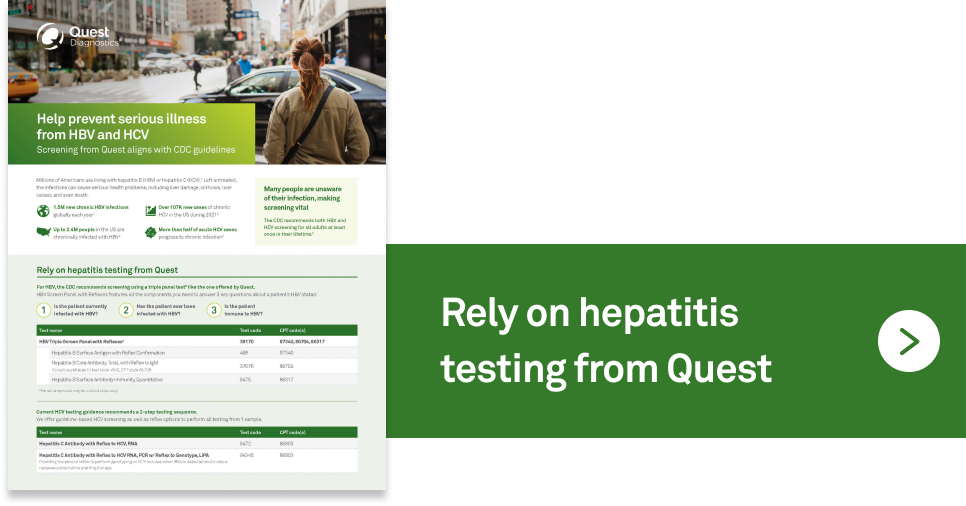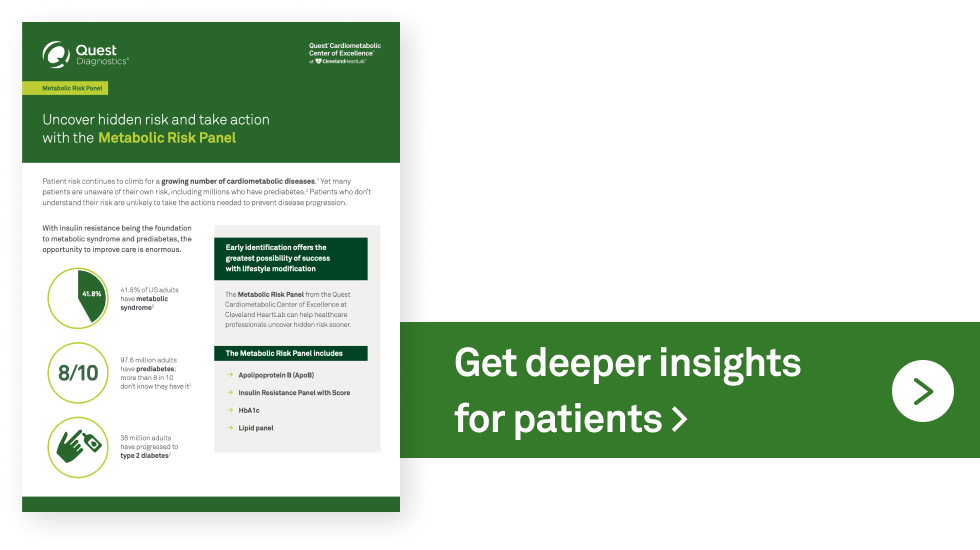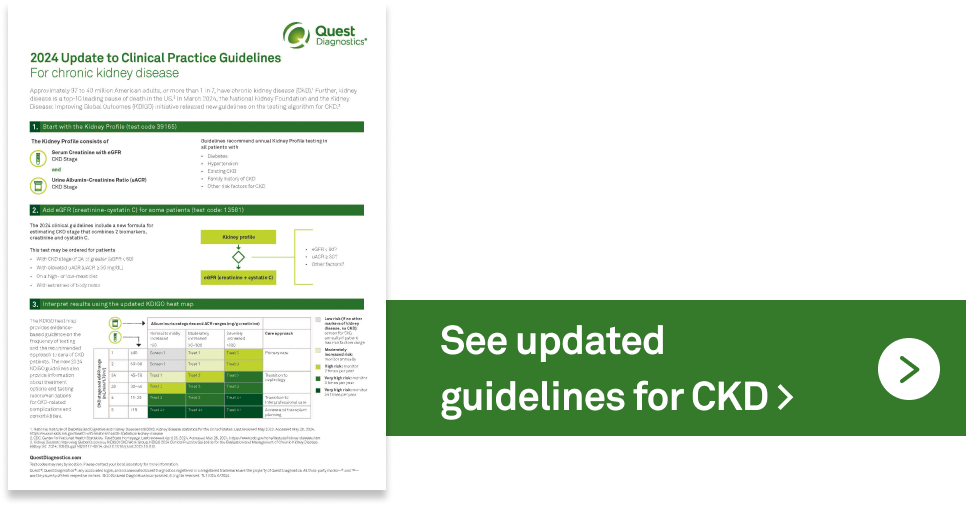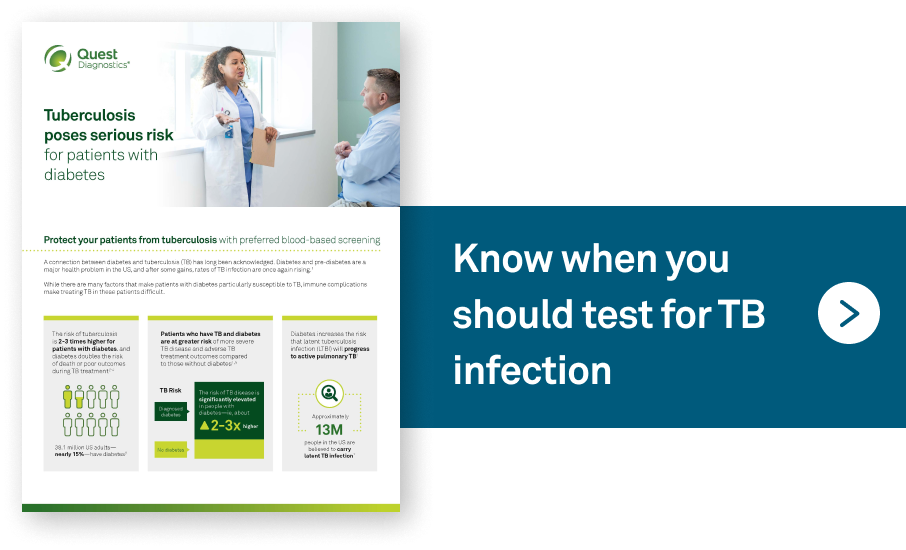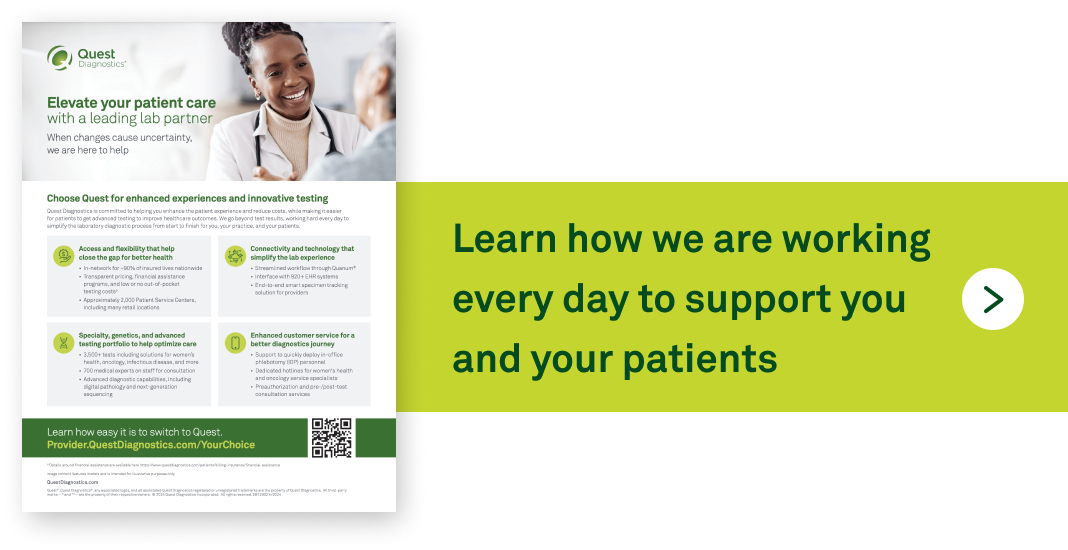January 2025

Discoveries, trends, and discussions in medical diagnostics
1) January is Cervical Health Awareness Month
2) Stay vigilant with hepatitis B and C screening to help prevent serious illness
3) Uncover hidden metabolic risk and take action
4) Protect your diabetic patients from TB with preferred blood-based screening
5) Watch our webinar about the latest on novel psychoactive substances
|
|
January is Cervical Health Awareness Month |
|
|
January is Cervical Health Awareness Month |
|
|
January is Cervical Health Awareness Month |
January is Cervical Health Awareness Month |
Empower patients with screening and prevention tools
More than 11,000 people in the US are diagnosed with cervical cancer each year.1 The good news? Vaccination and regular screening can prevent the disease. During Cervical Health Awareness Month, join Quest Diagnostics in raising awareness of the important screening that is available, including HPV tests and Pap tests that can help prevent cervical cancer or find it early.
Our comprehensive cervical cancer screening portfolio empowers you to meet every unique patient need. |
 |

|
Better outcomes |
Better outcomes |
Stay vigilant with hepatitis B and C screening to help prevent serious illness
- For HBV, the CDC recommends screening using a triple panel test4 like the one offered by Quest
- Current HCV testing guidance recommends a 2-step testing sequence. We offer guideline-based HCV screening as well as reflex options to perform all testing from 1 sample
Uncover hidden metabolic risk and take action

|
Better experiences |
Better experiences |
Protect your diabetic patients from TB with preferred blood-based screening


Reduce the risk of future complications
- Blood-based IGRA testing is highly accurate and provides objective results, with a low rate of false positives12,13
- IGRA testing is preferred in all cases by the CDC, ATS, and IDSA12,13

|
Removing traditional barriers to testing |

|
Removing traditional barriers to testing |
Removing traditional barriers to testing |
Watch our webinar about the latest on novel psychoactive substances
Traditional testing may miss NPS
- Overview of the various classes of new designer substances appearing across the US
- Prevalence data pulled from recent laboratory testing
- Review of available testing options, including definitive testing, to identify NPS use and/or exposure


